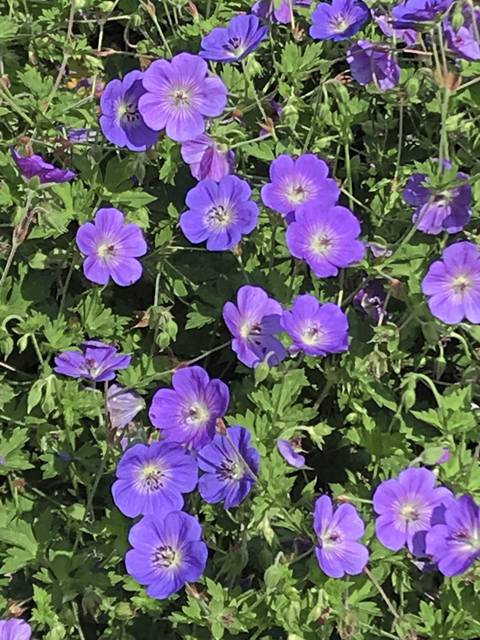True geraniums are hardy, disease- and pest-resistant perennials
Question: I just found out that geraniums aren’t actually geraniums! I’ve been growing them in a porch pot for years and didn’t realize there’s also a perennial called a geranium. What’s the difference between them and are the perennial ones worth growing?
Answer: When most gardeners read the name “geranium,” they probably think of the plants we grow as annuals here in North America with large, rounded flower clusters on straight flower stalks and lily pad-like leaves. They’ve been cherished by generations of gardeners as bedding plants and in containers and hanging baskets.
These plants are in the genus Pelargonium, and in warmer climates they are not annuals but long-lived perennials. Here, we grow them as annuals since they are frost-sensitive and won’t survive freezing temperatures (I know plenty of gardeners who overwinter their geraniums as houseplants, though).
While these geraniums are lovely plants, you’re correct in saying there is yet another group of plants known as geraniums. This group of plants are in the genus Geranium. In my mind, they are the true geraniums, though they look nothing like the annual geraniums growing in your porch pot every summer.
Hardy perennial
Members of the genus Geranium are hardy perennials, and most have round, individual, 5-petaled flowers that are shaped like a bowl. Their lovely foliage is mounded and they are consistent bloomers that come in an array of colors.
Fully winter-hardy and resistant to pests and diseases that commonly plague annual geraniums (hello slugs, budworms, and botrytis, I’m talking to you!), they are also a welcome sight to bees and other pollinators.
Known commonly as cranesbills, due to the production of a slender, pointed seed pod that looks like the beak of a crane, true geraniums are drought-tolerant and very low-maintenance. A quick haircut in the middle of summer is all you need to keep this plant looking good and producing a steady supply of blooms.
There are dozens of different varieties of true geraniums. They are so lovely, in fact, that one variety, “Rozanne,” was named Perennial Plant of the Year by the Perennial Plant Association for 2008. It’s a long-blooming variety with blue/purple blooms and a height of 20 inches.
Their deer resistance is another perk, along with their tolerance of a broad diversity of growing conditions, from full sun to partial shade.
More blooms
Some varieties, such as “Johnsons’ Blue” and “Ann Folkard,” have a looser, floppier growth habit that rambles around and in between other plants in the garden. More compact selections, such as the pink-flowered “Biokova” (which was Perennial Plant of the Year in 2015) and purple-blooming “Max Frei,” stay tighter and more mounded.
Some selections have variegated or dark-colored foliage, too, including “Mourning Widow” and “Purple Ghost.”
To get the most of your geraniums, select a well-drained site with partial to full sun exposure. You’ll only need to water the plants during their establishment; after a year, they’re quite tolerant of dry spells.
When the first flush of blooms is finished, typically in mid-summer, cut the plant back hard (I cut mine all the way back to the ground). They’ll generate a new flush of growth and another set of flowers.
Some varieties can even be trimmed a second time, in late summer, to generate yet another set of blooms.
Horticulturist Jessica Walliser is the author of several gardening books, including "Attracting Beneficial Bugs to Your Garden," "Good Bug, Bad Bug," and her newest title, "Container Gardening Complete." Her website is jessicawalliser.com. Send your gardening or landscaping questions to tribliving@tribweb.com or The Good Earth, 622 Cabin Hill Drive, Greensburg, PA 15601.
Remove the ads from your TribLIVE reading experience but still support the journalists who create the content with TribLIVE Ad-Free.

